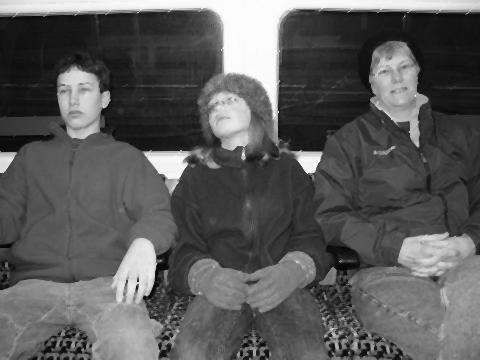

Photographs are often a mess. Sometimes there's a a hair or a scratch on the negative when you print a photograph. Still photographs taken from television broadcasts or from worn video tapes are often filled with static. Even photos taken with digital cameras might show signs of scratches or smudges on the lens. There are many ways an image can accumulate pixels that show "noise" instead of the intended subject.
One way to eliminate some kinds of noise is a median filter. The idea behind a median filter is that most pixels are surrounded by pixels of the same or similar color. If one pixel has an unexpected color (white for a scratch on the lens or black for a hair on the negative, for example), the surrounding pixels are probably still okay. If we somehow let a pixel's neighbors vote on the pixel's proper color, we might be able to get rid of noisy pixels.
Here's one way to arrange such a vote. Start with a grayscale
image. Cycle through all the pixels in the image with the usual
double loop over the rows and columns of the image. For each pixel
P:
P itself plus the eight surrounding pixels.P.The left image below is a gray version of an image, with some artificial scratching added to it. Using the median filter described above, with radius-1 square neighborhoods, we get the image on the right. At the cost of a bit of blurring and flattening of the grays, we have nearly eliminated the severe damage of the diagonal scratches.


It's interesting to see that some images clean up better than others. In this scene, for example, the same median filter doesn't do nearly as good a job of fixing the problem (any ideas why?).


We will be adding more methods to PhotoLab. You can
use the PhotoLab that you used for the previous
assignment, or you can start again from scratch if you wish. Here are
the methods that your PhotoLab class should have:
public PhotoLab(EzImage image)public EzImage getOldImage()
This returns the current EzImage object (the original, untouched
image).public EzImage getNewImage()
This returns the new EzImage object (the modified image).public void scratch()public boolean filter(int radius)true, but it should return false if the
radius is less than 0.